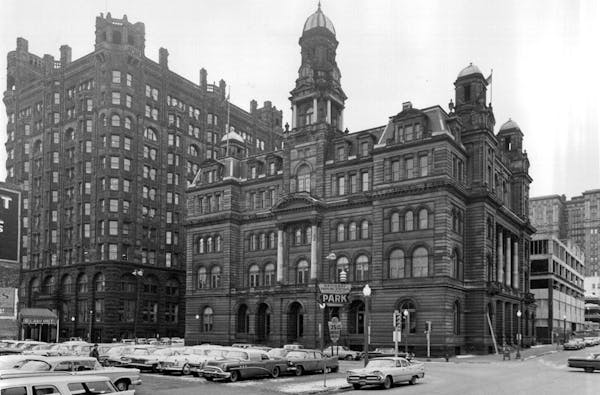Minneapolis and St. Paul are two of the coldest cities in North America, yet our street corners, bus stops, doorways, storefronts and sidewalks seem to be designed for eternal summer.
When was the last time you sat outside in the winter sun to have a cup of coffee? Given the psychological windchill of our downtowns, city neighborhoods and suburban retail areas, doing so would seem crazy.
But Edmonton, Alberta, a wind-whipped Canadian city even colder than our own, is applying strategies to create a "patio culture" year-round.
Approved in 2016, the Edmonton Winter Design Guidelines outline simple design solutions to make the streetscape more enjoyable in winter, including blocking prevailing winds and downdrafts, maximizing sun exposure through orientation and niches, introducing color in buildings, signs and vegetation and adding warmer lighting.
Even better, these guidelines call for upgrades that are inexpensive, adaptable to varying locations and relatively easy to explain.
While the metro area has undertaken no coordinated plan to make our cities more winter-friendly, we do have pockets, small plazas and street corners that provide respite. They may be humble, have been altered over time and weren't planned for such a purpose. Yet taken as a whole, they provide a rich catalog of winter design strategies that we should embrace and employ on a larger scale.
Hennepin Avenue's pocket parks
Stretching diagonally across much of Minneapolis, Hennepin Avenue grew up along a path leading to Lake Harriet. It's going-against-the-grain layout created several triangular spaces at the street crossings around Franklin Avenue. With the advent of the streetcar, this segment of Hennepin quickly grew commercialized, with two- and three-story commercial buildings fronting small, almost accidental plazas.
When streetcars gave way to buses, many of these irregular corners became bus stops. And most of them proved to be relatively pleasant spots to wait for the bus, even in wintertime.
On the southwest corner of Franklin and Hennepin, several factors come together to create a warmer sense of place. The enclosure of the storefronts offers shelter from the wind. Their awnings, augmented by a circular grove of ginkgo trees planted by the city, help to reduce downward drafts. Framed by buildings, this triangular space becomes an outdoor room filled with morning sunlight.
At night, the corner's varied storefronts, including Sebastian Joe's, cast light onto the sidewalk and project a sense of life inside.
Two blocks south, near Tao Cafe & Herbery, there is a remarkable sense of enclosure along 22nd Street, where the cafe has installed seating between the building and sidewalk, and on Hennepin, where awnings and a small grove of trees create a canopy over a few Adirondack chairs that remain in place throughout the winter.
50th Street and S. Bryant Avenue
This intersection, another small retail hub created by former streetcar stops, boasts color, sunlight and welcoming small shops.
On the northeast corner, a row of circa 1910 storefront bays faces directly south, allowing the sun's low winter angle to warm the sidewalk and penetrate deeply into the stores.
The stores are consistent in scale and rhythm, yet varied in how their signs and window displays embrace the sidewalk. The entire block looks like a bouquet of bright colors on sunny winter afternoons, inviting you to stop by to visit its varied shops and restaurants. Tangletown Bike Shop even has a bench next to its front door. Set back into a niche, it's the kind of place where you could sit outside with coffee on a mild winter day.
Milton Square in St. Anthony Park
Small shops with apartments and offices overhead animate Milton Square, a very unusual early 20th-century mixed-use development on Como Avenue in St. Paul.
A cluster of Tudor-Craftsman-style buildings stretch along adjacent sidewalks with cafes, a wine store and clothing shops. In a design not often found locally, these structures are grouped around a courtyard plaza, creating a sense of enclosure on a very human scale.
Though it wouldn't meet today's accessible design requirements, Milton Square is a model for contemporary winter streets and corners. Warm, illuminated bay windows draw you into the court. Once you're inside, evergreens, awnings and varied rooflines provide protection from weather and traffic.
Even though these are small street corners, many of which date back a century, they can teach us a lot about what we need today. Over the past several decades, there has been a lot of talk about the livable winter city. But how much progress have we really made?
Discovering the promise of winter cities begins on the streets — in our ability to observe and rediscover the subtle details in ordinary buildings, doorways and corners. Like Edmonton, we can transform such time-tested winter wisdom into real policies for how we build today.
Frank Edgerton Martin is a landscape historian and consulting writer for architecture and design firms.








